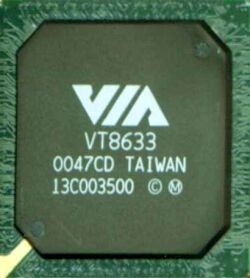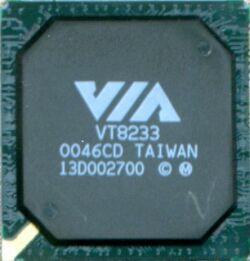DDR for Pentium III: 10 Boards with VIA Apollo Pro 266
General Overview Of VIA Apollo Pro 266, Continued

The VT8633 Northbridge on the VIA Apollo Pro 266 chipset monitors the AGP bus, which is run at a maximum of 4x. The most important feature added to the Pro 266's predecessor, the Apollo Pro 133A, is that the platform can now be supplied with DDR SDRAM. However, the chipset is still downwards compatible with conventional SDRAM. The MSI Pro266 Master and the Shuttle AV32 have separate DIMM slots, offering one group for SDRAM and another for DDR SDRAM. Operating SDRAM and DDR SDRAM at the same time is, however, not possible. You can only use one or the other. The remaining test candidates only have slots for DDR SDRAM. SDR SDRAM can no longer be used.

The Apollo Pro 266 chipset's VT8233 has several up-to-date features. The Southbridge uses the so-called V-Link protocol to communicate with the VT8633 Northbridge. VLINK is clocked at 133 MHz (266 MHz DDR), while the data throughput is substantially lower for older VIA chipsets.
Another feature has been added to VLINK, ATA/100 and AC97 Sound - the VT8233 can act as an onboard network, a feature which the Shuttle AV30 and the Soyo SY-7VDA make use of. The Asus CUV266, on the other hand, comes furnished with a special 3COM chip for the network hook-up. USB capacity has been increased from four to six potential channels.
Stay on the Cutting Edge
Join the experts who read Tom's Hardware for the inside track on enthusiast PC tech news — and have for over 25 years. We'll send breaking news and in-depth reviews of CPUs, GPUs, AI, maker hardware and more straight to your inbox.
Current page: General Overview Of VIA Apollo Pro 266, Continued
Prev Page DDR SDRAM For Socket 370 Next Page Difference Between SDR SDRAM And DDR SDRAMMost Popular


